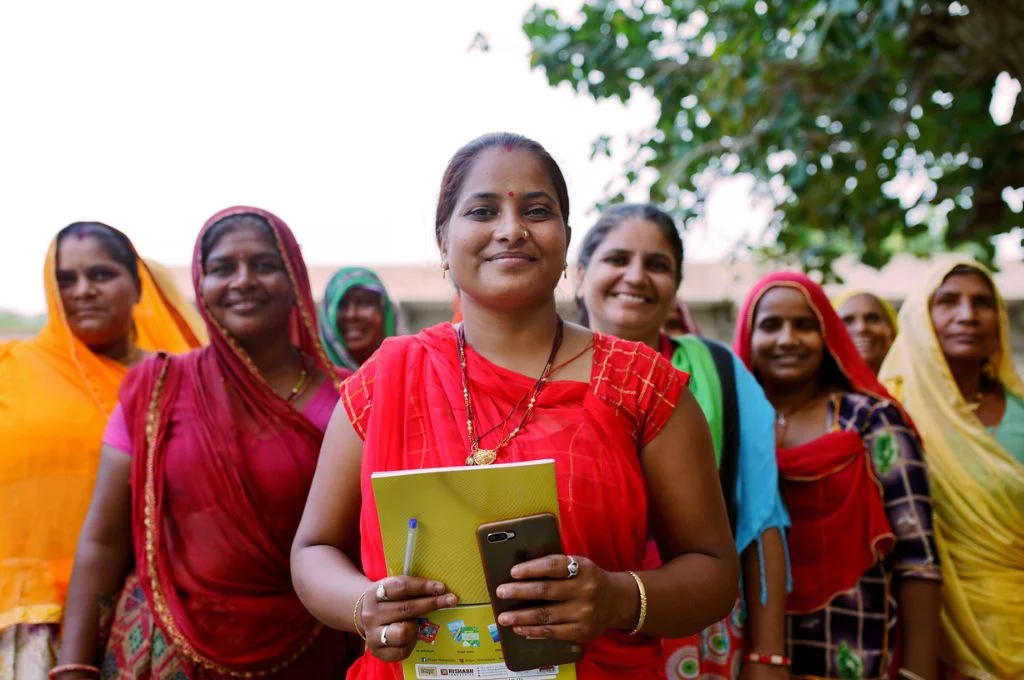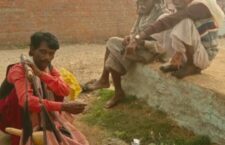The lack of interventions around women’s land rights in India points to the need for equipping community-based organisations to handle such work. How can this be done?
by
Access, ownership, and control over land can provide women with financial security, shelter, income, and livelihood opportunities. Despite this, there remains a distinct lack of funding for such work and a dearth of structured interventions around women’s land rights (WLR) in India.
Through Womanity Foundation’s work in this arena, we’ve observed that women in rural India often approach the organisations embedded in their communities for support on a host of issues—domestic violence, access to government schemes, skilling, and so on. As a result, these community-based organisations also become the first port of call when women experience land rights issues. Unfortunately, many of them are unable to step in and provide adequate support. Some of the reasons for this are:
- They lack the requisite technical skills and understanding of land laws and claims processes as well as proven strategies for intervention.
- The laws and processes concerning land are constantly evolving. For example, the government’s drive towards digitisation has been challenging for a number of community-based organisations, which may not have the knowledge, confidence, and connectivity to engage with such online processes.
- When looking at land rights, organisations also need to address the social and cultural challenges within the communities such as the complex, multi-layered factors of caste, class, gender, and political allyship, which lengthens the process.
In parallel, the WLR ecosystem requires robust data; extensive, action-based research; open-sourced assets; and collaboration platforms that bring together various stakeholders, including practitioners, academicians, researchers, land and gender experts, and government officials.
It is evident that the ecosystem needs to mature on various aspects. At the Womanity Foundation, we provide funding to various nonprofit partner organisations to implement land rights programmes on the ground. However, we also recognise the need for and importance of building awareness and technical capacity for a larger set of nonprofits and other organisations within the ecosystem. Towards this goal, one of our initiatives has been capacity building via a WLR course that is open to all nonprofits. Below, we outline our experience of conducting the course and how our learnings are informing our work.
Strengthening the WLR ecosystem through training
We realised fairly early that we need to accelerate and broaden the work being done within the ecosystem by actively providing capacity-building support to a larger set of nonprofits. This would especially benefit those that engage with land rights issues in an informal manner and lack the ability or confidence to engage with it more deeply.
To do so, we created a formal course on WLR in India in partnership with the Working Group for Women and Land Ownership (WGWLO)—a network of 45 organisations that has been working on women’s access to and ownership of land since 2002. The aim was to design a 101 on WLR and to structure and distribute the learnings of WGWLO’s member organisations to a larger set of stakeholders. The resultant 90-hour course was undertaken in 2022 by 50 nonprofit practitioners seeking to increase their understanding and incorporate WLR into their programming.
The majority of participants were from organisations that had done some work around land rights and wanted to be more deliberate about how they work on WLR. The participants were a mix of middle managers, programme managers, field officers, researchers, and academicians. Besides exploring optimal strategies for talking about WLR with communities and providing information about the laws and processes related to the issue, the course also included a practical element. The participants were encouraged to design a WLR project within their intervention area, and WGWLO guided them in developing and executing their projects over an eight-week period.
The course received good engagement and feedback, and it is something that we are continuing to support in 2023. Nonetheless, we realised that this alone cannot reach all stakeholders and have the required impact; it needs to be complemented by other forms of capacity-building efforts.
What we learned
1. Accounting for heterogeneity
The course served as a great introduction to WLR, especially as it related to agricultural land and inheritance rights in cohort 1. Based on feedback from participants, cohort 2 included additional components and covered more types of land and the laws that govern them (for example, forest land/forest rights). But there is still scope for enhancement in terms of accounting for women from different religions, tribes, and geographies in future editions.
The field cadres working on WLR—the primary points of contact for the communities—are not homogenous either. For example, many women who work with the communities are not very proficient in reading and writing. Therefore, the course in its current form is not fully suited to them and needs to be tweaked. This compelled us to expand our thinking on how training can be delivered in a personalised manner to the diverse cadres working on this issue.
2. Remembering that context matters
In addition to the basics learned through the WGWLO course, an organisation would benefit from learning about the laws and processes that are most applicable in the region where they operate and to the communities they work with. This impacts the design and delivery of advanced courses, which will need to be adequately contextualised.
Contextualising also means identifying local role models and resource people who can work with these organisations and communicate with them in the local language. For example, an organisation dealing with a land rights case in Almora, Uttarakhand, will be able to conduct their work far more efficiently if they have the option of approaching a local lawyer for assistance. Therefore, ensuring that organisations have access to local resources that enable them to undertake WLR work in their intervention areas is critical.
3. Taking the course to participants
To achieve truly effective on-ground implementation, the WLR agenda would need to permeate all levels within a nonprofit. A more comprehensive shift in programming requires training to be taken to the organisation and their field cadres, which mainly comprise women from local communities. The needs of this cadre of women—language, time constraints, etc.—must be considered as well.
Hence, there is a need to simplify and take the course to them—be it online or localised for region, language, type of land, etc. This could also allow participants to take the course at their own pace and place and track their progress independently. Moreover, we see this as a step to democratise knowledge for the locals, which would enable WLR work to be carried out beyond the organisations themselves. This will help fulfil our ultimate aim, which is to ensure that women in communities have access to land and WLR work is happening on the ground.
Enabling WLR requires developing the cadres’ capacity to execute interventions and improving the organisations’ knowledge of the land rights landscape. Therefore, we believe that other modes of training and capacity building should be simultaneously adopted to cater to the varied range of practitioners in the space.
What can other stakeholders do?
Funding or working on land rights can be challenging. Therefore, organisations involved with the cause can adopt an incremental approach. As an example, an organisation working on nature-based livelihoods could start by trying to understand the status of women’s role and decision-making in land-related matters. This could help them gain insights into the current situation, identify the scale of the problem, and tweak their interventions to ensure the long-term impact of the work they are funding.
Women farmers enjoy greater access to schemes when they have documentation indicating their ownership over farmland. Therefore, organisations with structured interventions for the benefit of smallholder women farmers should certainly create an indicator around women’s ownership and control over their land. Funders that support organisations working on biodiversity, climate change, and environmental sustainability should consider looking at the role of women in the solutions and mitigations that they design. This is because adopting a gender lens can enable the creation of environmental solutions that are implementable, sustainable, and grounded in the knowledge and realities of the communities.
Ultimately, we have to change the discourse around land rights in general and women’s land rights in particular. Currently, it can seem a bit daunting to those who are unfamiliar with the space, and this prevents actors from taking up or directing resources to the cause. As a result, while funders are eager to support causes that are adjacent to (and often contingent on) access to land, direct funding for WLR remains sparse. Changing the narrative around WLR can thus accelerate the shifting of the actualities on the ground.
This article is supported by Womanity Foundation and has been published first by IDR English.
यदि आप हमको सपोर्ट करना चाहते है तो हमारी ग्रामीण नारीवादी स्वतंत्र पत्रकारिता का समर्थन करें और हमारे प्रोडक्ट KL हटके का सब्सक्रिप्शन लें’


